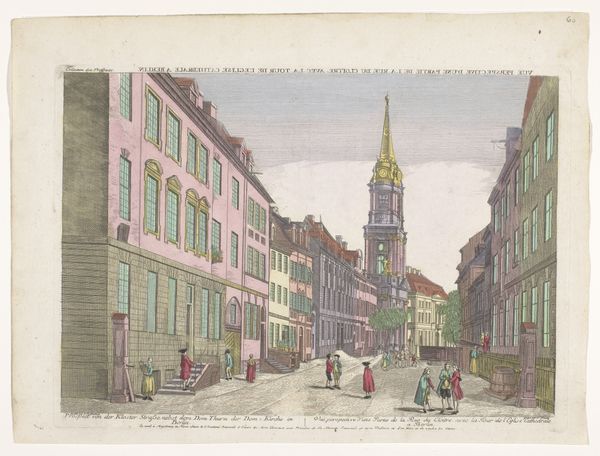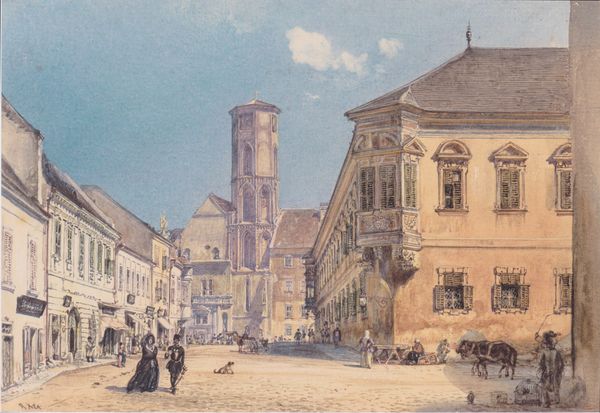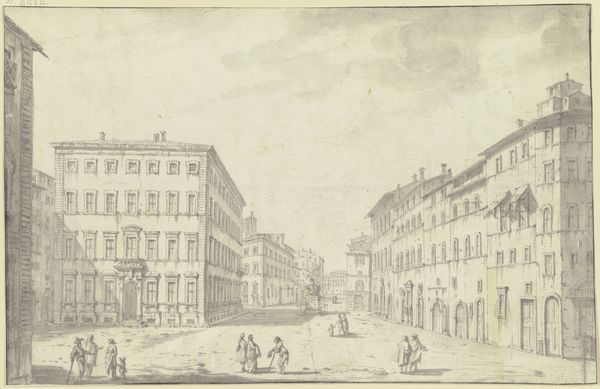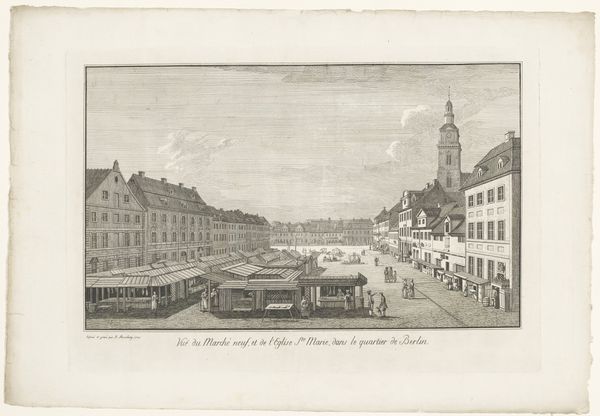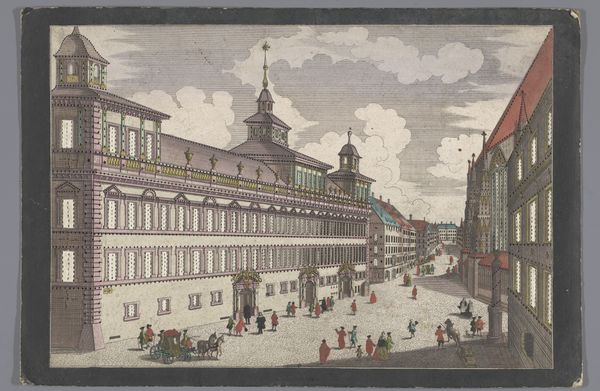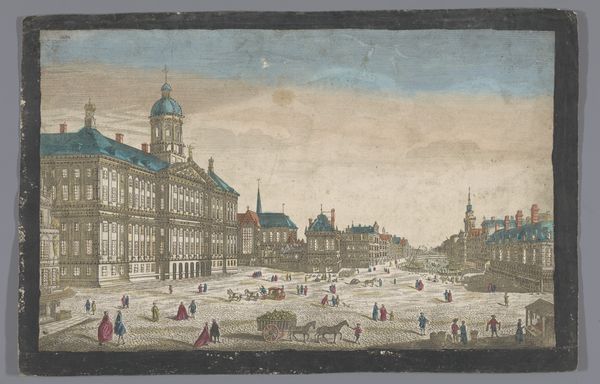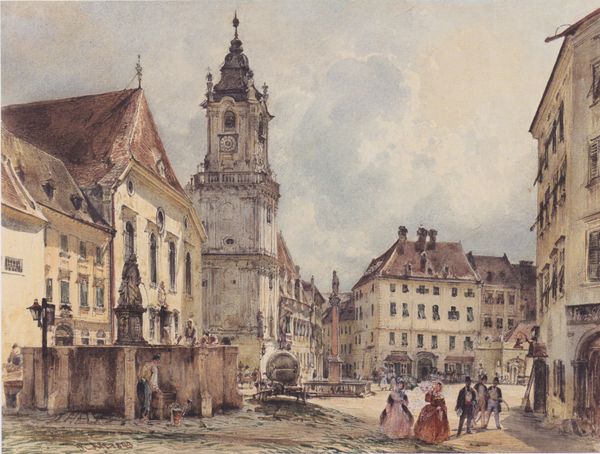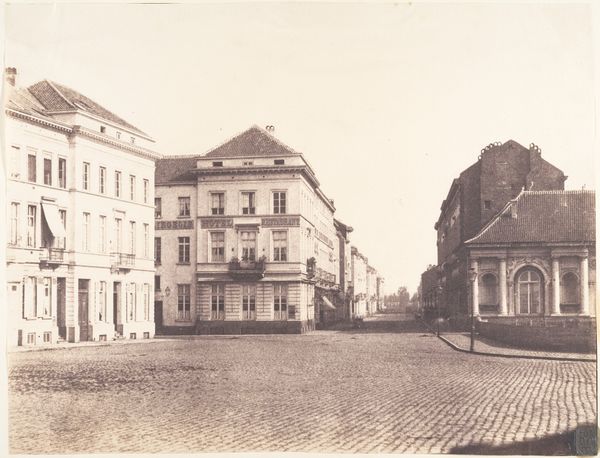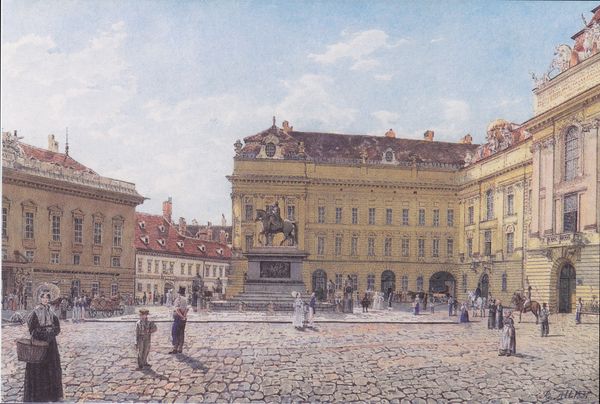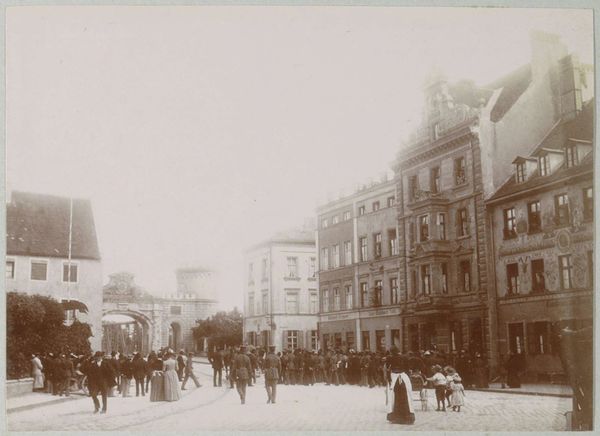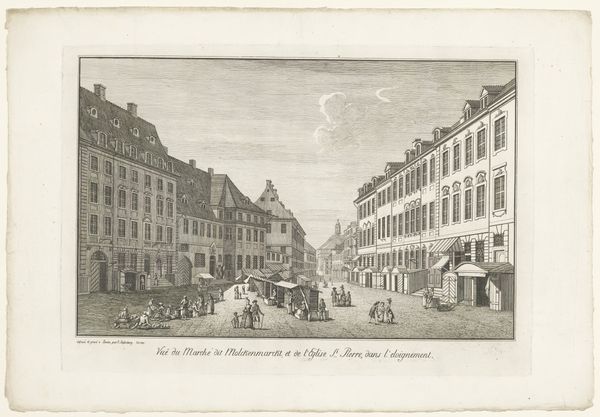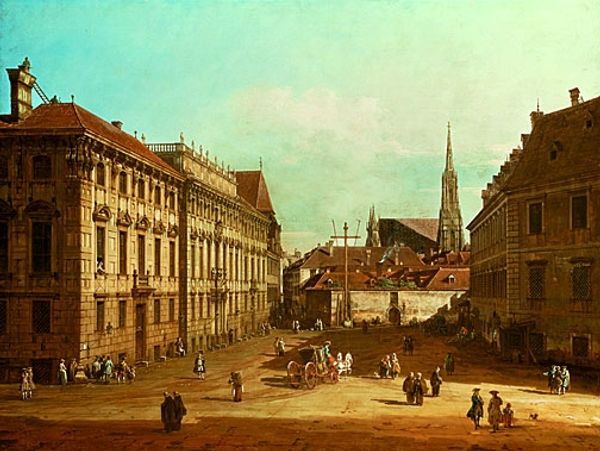
drawing, watercolor, ink, pen, architecture
#
drawing
#
watercolor
#
ink
#
romanticism
#
pen-ink sketch
#
architecture drawing
#
pen
#
cityscape
#
watercolor
#
architecture
Dimensions: 26.2 x 33.1 cm
Copyright: Public domain
Curator: Johann Nepomuk Passini's "Freyung, Vienna," created around 1830 using ink and watercolor, presents a compelling cityscape. What are your initial thoughts on it? Editor: It evokes a sense of quietude, a stillness despite the presence of figures. The palette is muted, and the architecture looms, seemingly indifferent to the lives unfolding in its shadow. There’s a real feeling of societal structure. Curator: It’s fascinating how Passini captures this urban landscape with such delicate materials. Consider the ink and watercolor – these weren't necessarily considered "high art" materials at the time, often associated with sketching and preparatory studies rather than finished works. The application, though, is so meticulous, almost architectural in its precision. Editor: Precisely. I think understanding Vienna at this time is key. 1830 was a period steeped in Metternich's conservatism, a time of strict social control after the Napoleonic Wars. Does the artist intend to reflect the disquiet of those under imperial scrutiny? The romantic ideals often focused on individuality but in Passini's rendition, that is subdued to the urban infrastructure. Curator: Absolutely, the physical materials directly relate to Passini’s craft and perhaps even to his class position within the artistic landscape. Could the choice of medium also indicate a particular target audience or mode of display? And what does it communicate about his access to resources and patronage networks? Editor: The architecture itself is not just background; it's an active participant. Those buildings weren’t just there by accident—they are physical manifestations of power, shaping public space, literally casting shadows upon the lives of the people depicted here. The Church represented in the upper-right, a silent witness to political maneuverings... Curator: And within those meticulously rendered buildings, consider the labor involved in their construction and upkeep. From quarrying the stone to crafting the ornate details, countless hands contributed to the built environment that Passini immortalizes here. This becomes a valuable visual document of production. Editor: A very interesting point. Viewing the landscape beyond its surface reveals complex issues around control and power. Even its artistic construction implies social and cultural meaning making the landscape a visual treaty, if you will. Curator: Exploring "Freyung, Vienna" has highlighted not just its aesthetic qualities but the vital relationship between its materiality and the social structures of its time. Editor: Indeed. By acknowledging historical, social and creative influences on a painting like "Freyung, Vienna", our understandings of art broaden into deeper examinations of history.
Comments
No comments
Be the first to comment and join the conversation on the ultimate creative platform.
